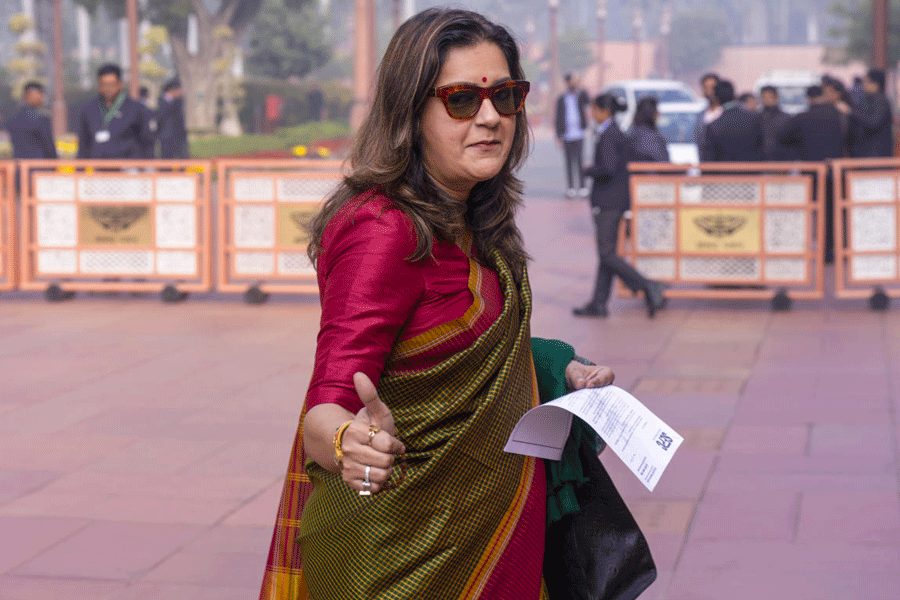At last count, Oppenheimer, the latest Wagnerian monument by the British film-maker, Christopher Nolan, has raked in over Rs 100 crore in India. While Oppenheimer is distinctly second to Barbie in the global box-office stakes, in India the situation is dramatically reversed.
The Indian cult around Nolan has always seemed to me somewhat curious and puzzling. Especially when you take into account that Oppenheimer is perhaps the most intellectually demanding of Nolan’s movies. At a running time over three hours, the movie straddles multiple timelines: the feverish climate of scientific discovery in inter-War Europe, the exodus of Jewish scientists in the light of the growing Nazi menace and their subsequent participation in the Allied cause, leading to the fateful development of the atomic bomb in the New Mexico desert in July 1945. Running parallel to these are post-War narratives that interrogate the titular character’s tragic fall, as he finds himself ensnared in the hostile web of McCarthyism. The movie demands more than a passing acquaintance with mid-20th century America: the Truman era, and the birth of the military-industrial complex.
Like the great cellist Yo-Yo Ma, Nolan’s immense popularity does a disservice to his intellectual seriousness and formidable artistic achievement. In what is also true of elite sport, the accessibility of the spectacle masks its complexity and depth.
Consider The Dark Knight trilogy which, once you get past the thrills, remains the most vigorous defence of the elite conservative worldview. In the trilogy’s prophetic conclusion, three years before the election of Donald Trump, Nolan’s argument was that even a flawed establishment is worth defending because what lies on the other side is demagogue-fuelled chaos. In recent years, Nolan has transferred the conservatism of the Batman movies to the 1940s — Winston Churchill’s evacuation at Dunkirk, the birth of the atomic bomb — the most recent epoch in history when white men reigned unchallenged, achieving things of global import.
Watching Oppenheimer in a Delhi theatre, I began to grasp the nature of the Indian cult around Nolan. What may appear to be benign fandom on the surface reveals pathologies, insecurities and psychological fears of elite Indians that go far beyond admiring a Hollywood celebrity director. Beneath such affinities lie deep cultural anxieties: hyper-masculinity, anti-intellectualism, and a fraught relationship with the West, craving acceptance and familiarity but also battling alienation and cultural incomprehension, what Ashis Nandy memorably termed the “landscape of intimate enmity”. These anxieties make the globalised Indian a troubled entity and, consequently, a large number of them fanatic votaries of Hindutva.
The masculinity thesis is the easiest to prove. A quick eye-test at the theatre put the gender ratio at roughly five to one. I had met many such men (derisively but perhaps not inaccurately referred to as ‘Nolan bros’) who claimed to have found definitive explanations to the director’s most opaque movies, deliberately curated puzzles such as Tenet and Inception, that seek not so much to provide answers but pose phenomenological questions about the nature of consciousness and existence.
As Oppenheimer intricately navigated the arcana of American politics and government — Senate hearings, security clearances — the movie’s detail tested the familiarity of even the most dedicated junkie of modern American history. Much of the audience seemed visibly bored, staring at their phones for long periods, not expecting to confront an oppressively idea-driven film. Two hours in, as the movie staged Trinity, the successful testing of the first atomic weapon in history, I could feel the audience relax, finally having been granted a morsel of visual grandeur.
Trinity is a deeply sobering philosophical moment in the movie that sets in motion Oppenheimer’s tumultuous internal conflict. As I took in the powerful sequence, cheering and clapping erupted in the theatre almost as if the birth of the atomic age and the prospect of nuclear annihilation was a wonderful thing. It struck me that the majority of my fellow film-goers had been watching an entirely different film; they had interpreted the movie through a lens which was both uncomprehending and illiberal. In the ambivalent character of Oppenheimer, they saw an undisguised hero, and the atom bomb to them was a spectacular technological event worthy of celebration. This confirmed something I’ve always suspected about Indian Nolan fans: that they love the visual operatic spectacle, drawn by the surface plasticity of what the West embodies, mostly without understanding even the barebones of the ideas upon which such spectacle is mounted.
It is, however, important to ask: why should someone born in Delhi (or Mumbai or Bangalore) be expected to fully absorb the very American story, at one level, that Oppenheimer seems to be telling?
That is unless we understand what torments the elite, urban Indian is not the perplexity of foreign cultures, but that they are strangers to their own civilisation that they forever trumpet as superior to everything else. As the Trinity explosion goes off, Oppenheimer, for whom the Bhagavad Gita remained the singular metaphysical influence in his life, recites in his mind a verse from the text: “Now I Have Become Death, the Destroyer of Worlds.” The Gita citation is the birth of a remorse that would eventually drown Oppenheimer and yet this Indian audience was seemingly oblivious to the canonical Hindu text, the anguish and ethical doubt at the prospect of unleashing Armageddon-scale violence. It was plain that they were as incognisant of the Gita as they might have been of the scientific jargon and American specifics that populate the film.
I was reminded of a piece Aakar Patel wrote many years ago where he suggested the adherents of Hindutva had no interest in Hindu high culture. They were illiterate about their own classical traditions: art, music, architecture. Patel did not fault them for being unaware of the intricacies of Bach’s cello suites. “What about knowing something like Kumar Gandharva?” he asked.
As the end credits rolled, I was witness to another dissonant audience moment. In the concluding scene, Oppenheimer has a conversation with Albert Einstein, where he sombrely tells the famed, floppy-haired scientist that his work on the atomic bomb may have set off the world on the path of complete destruction. Following the conversation, the closing shot, hinting at a cascade of weapons testing, offers an alarming vision of a world with ever-greater capacity to destroy itself. The extraordinary affect of Nolan’s final act comes from how viscerally the movie conveys its pessimism and dismay about the atomic age, which seemed an unlikely cue for the rambunctious applause that followed.
As the lights came on, I felt an irritation but also pathos at my fellow film-goers. These were the subservient, bewildered children of globalisation; the primary audience to swallow whole the boosterism about India’s rising place in the world but culturally unmoored, lacking civilisational confidence and, therefore, psychologically defenceless against the cultural power of the West. For them to admit to being perplexed by the movie, let alone reject it, seemed out of the question. This uncritical adulation revealed a form of subterranean unease; almost as if they admitted to not understand or like Nolan, they would be forthwith ejected from membership of Westernised global citizenship to which they are so eager to belong.
Vaibhav Vats is an independent writer and journalist











